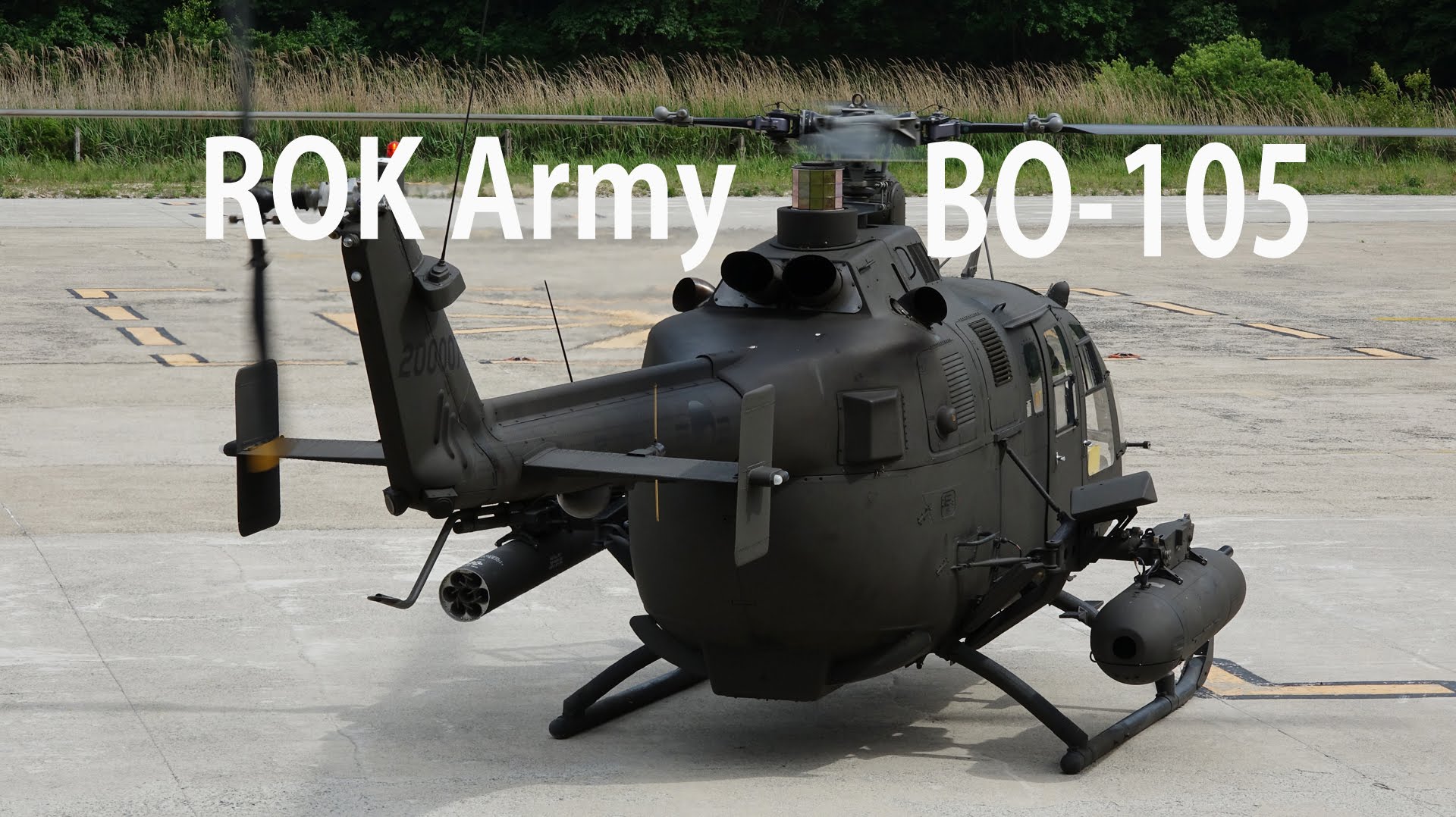Bo 105 Korean Light Helicopter (KLH) is a license-produced combat version of MBB Bo 105 CBS-5 custom-fitted with Korean mission equipment package including communication, navigation, electronic warfare and target acquisition system, to meet Republic of Korea Army’s operational requirements. During the late 1990s, the Republic of Korea Army aviation procured a number of Bo 105s as part of an ongoing drive to improve the force’s reconnaissance and surveillance capabilities; these were manufactured under a co-production arrangement between Eurocopter and the newly formed Korea Aerospace Industries (KAI), receiving the designation Korean Light Helicopter (KLH), KAI also promoted the type to export customers. Bo 105 KLH also has greatly improved rotor blade and transmission system. 12 Bo 105 KLH Light Attack Helicopters are in service.
The Messerschmitt-Bölkow-Blohm Bo 105 is a light, twin-engine, multi-purpose helicopter developed by Bölkow of Ottobrunn, Germany. It holds the distinction of being the first light twin-engine helicopter in the world, and is the first rotorcraft that could perform aerobatic maneuvers, such as inverted loops. The Bo 105 features a revolutionary hingeless rotor system, at that time a pioneering innovation in helicopters when it was introduced into service in 1970. Production of the Bo 105 began at the then-recently merged Messerschmitt-Bölkow-Blohm (MBB).
Military operators would commonly operate the type at a very low altitude to minimise visibility to enemies, the Bo 105 being well matched to such operations, as the helicopter’s flight qualities effectively removed or greatly minimised several of the hazards such a flight profile could pose to pilots. When outfitted with optional auxiliary fuel tanks, a basic model Bo 105 had a flight endurance of roughly five hours under load. In the event of a single engine failure, the Bo 105 could typically continue its flight, albeit with a reduction in cruise speed and range. Besides the two pilots, the cabin can be configured to accommodate up to three passengers on a single rear bench, which can be removed to make room for cargo or a stretcher, which can be loaded and unloaded via the large clamshell doors located at the rear of the fuselage. In a maritime context, the BO 105 can be equipped with auxiliary fuel tanks, emergency flotation equipment, an inflatable life raft, folding rotor blades and high skid landing gear.
The main production facilities for producing the Bo 105 were located in Germany and Canada; due to the level of export sales encountered, additional manufacturing lines were set up in Spain, Indonesia, and the Philippines. MBB became a part of Eurocopter in 1991, who continued production of the type until 2001. The Bo 105 was formally replaced in Eurocopter’s product range by the newer Eurocopter EC135, which was itself a development of the Bo 105. While the EC135 is primarily used by civil operators, a combat-capable military-orientated variant of the EC135, designated as the Eurocopter EC635, has also been produced. By the end of production, a total of 1,406 rotorcraft had been manufactured and delivered to operators in 55 nations worldwide.
Video by rider eye Aviation & Military














